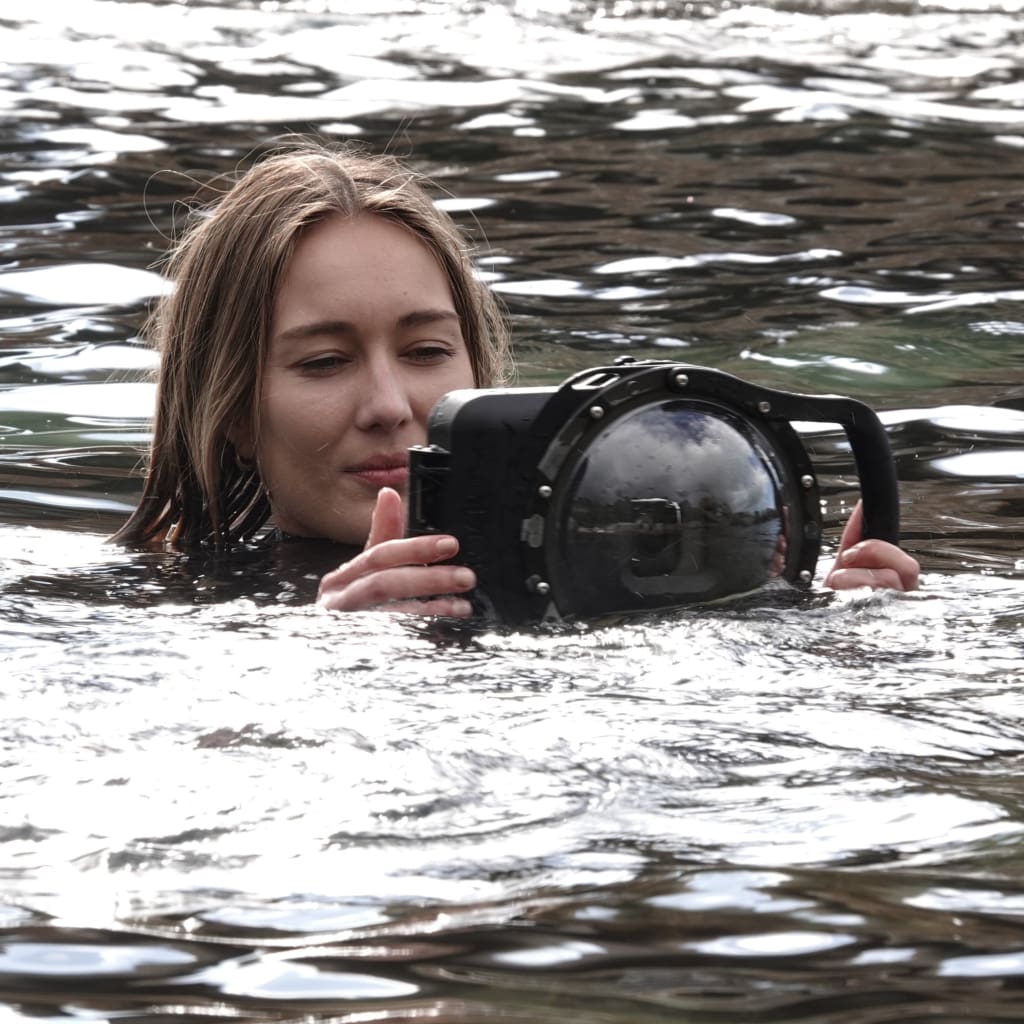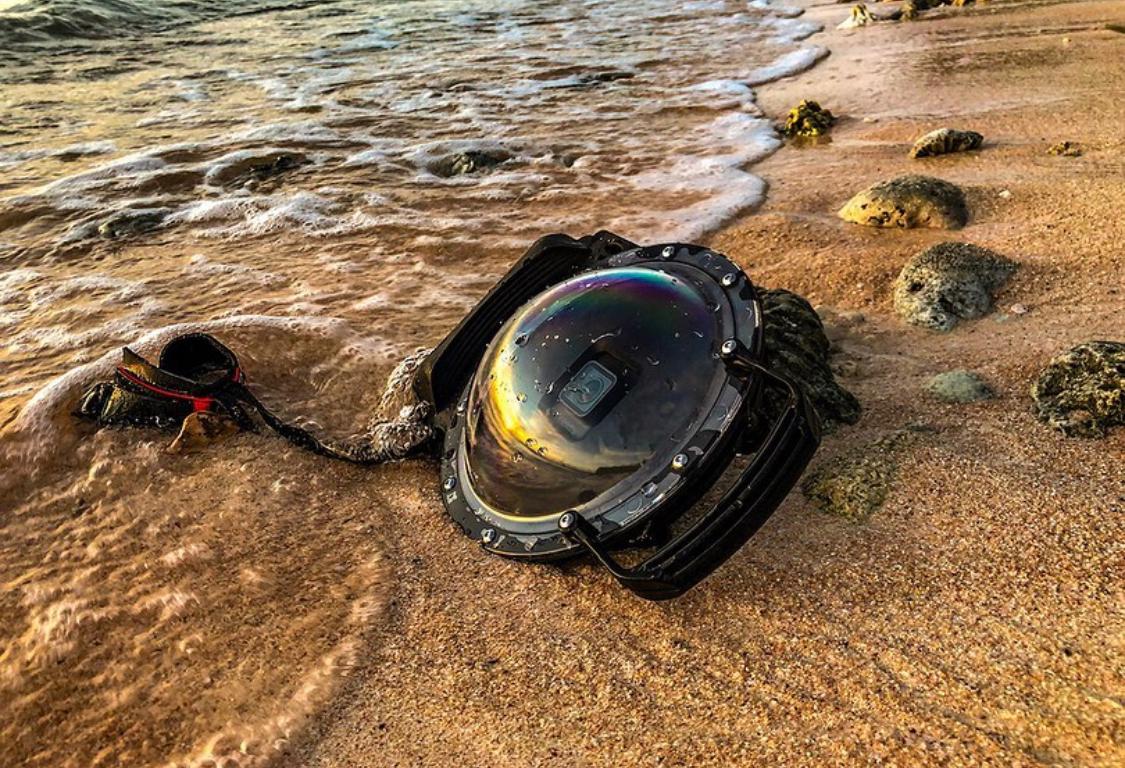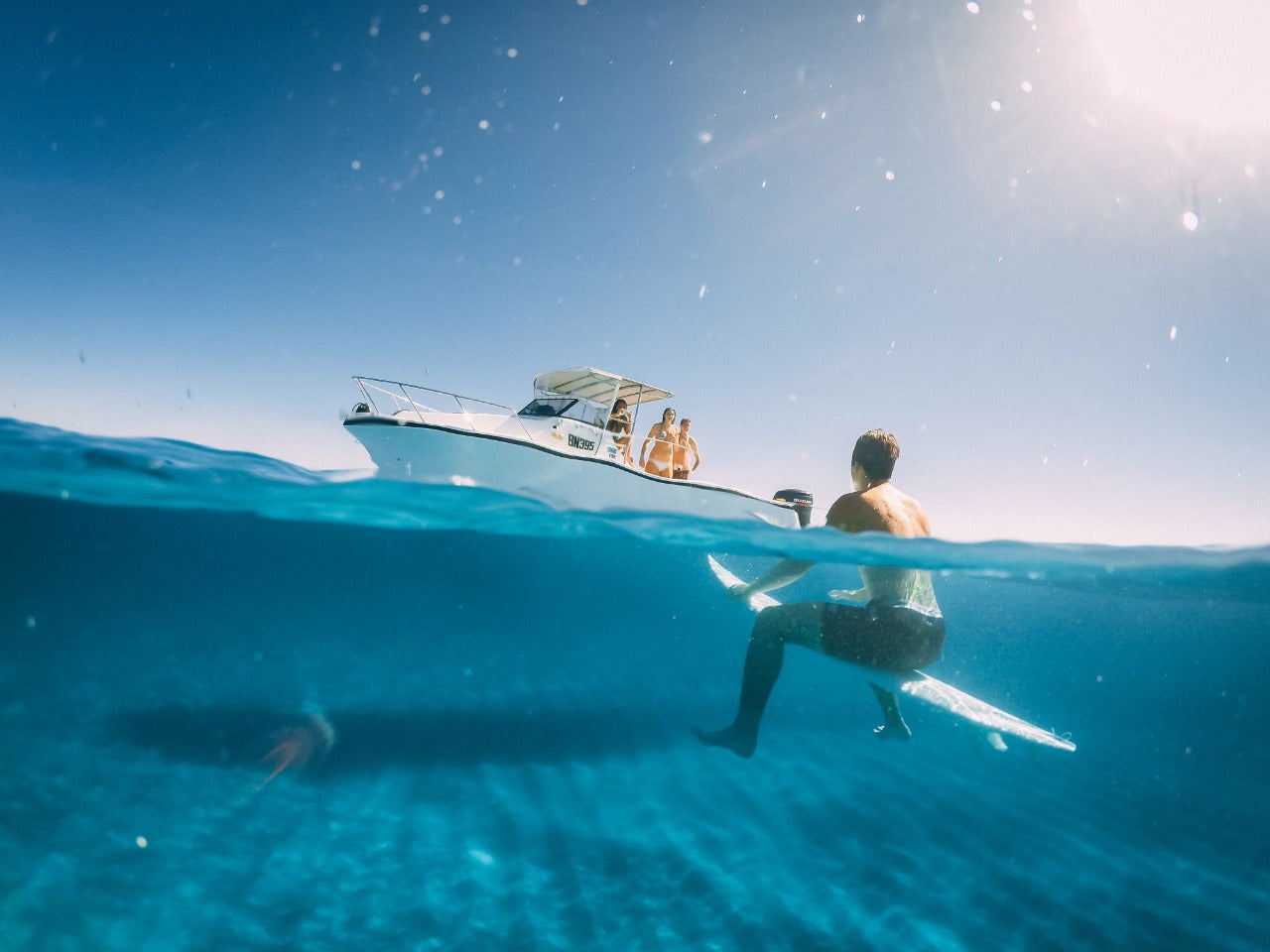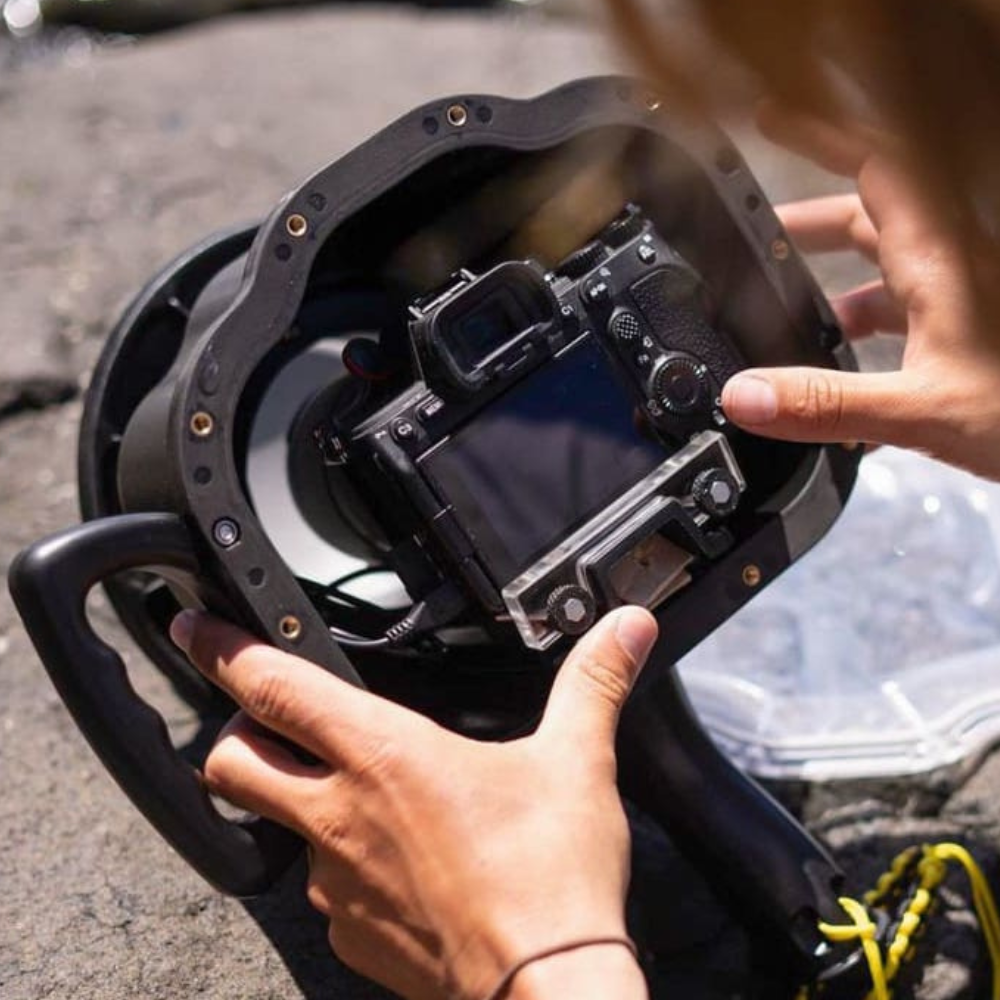Brett Eagle - 11 Nov 2024
Beginners Guide to Dome Ports

A dome port is an essential piece of underwater photography equipment, primarily used in underwater housings for cameras. Its main function is to allow photographers and videographers to shoot wide-angle or close-up shots while maintaining clarity and image quality when shooting underwater. Dome ports are especially useful when working with wide-angle lenses, as they help reduce distortion and improve image quality, particularly when close to the subject.
If you're new to underwater photography and looking into dome ports, here’s a beginner’s guide to get you started:
1. What is a Dome Port?
A dome port is a transparent, typically spherical or semi-spherical, housing that fits over your camera’s lens when submerged. It’s designed to correct for the refraction of light as it passes through the water, ensuring sharp focus and clear images.
Shape: Dome ports have a curved surface, which helps bend light properly as it enters the lens underwater. This is especially important for wide-angle lenses, which require the correct angle of light to maintain distortion-free images.
Material: Most dome ports are made from either acrylic or glass. Acrylic is lighter and more affordable but may scratch more easily, while glass is more durable and provides higher optical quality but is heavier.
2. How Dome Ports Work
When you shoot underwater, light bends (refracts) as it passes from air into water. This distortion can cause problems with clarity, focus, and lens performance. A dome port compensates for this by creating a smooth transition for light entering the lens, allowing for clearer and sharper images.
Wide-Angle Lenses: The curvature of the dome port helps maintain the field of view and reduces the "fisheye" effect or barrel distortion, which is common with wide-angle lenses underwater.
Close-Up Lenses: For macro or close-up photography, a dome port can help maintain focus and sharpness, although a flat port might be more effective in some cases
3. Types of Dome Ports
There are several types of dome ports designed for different uses. Some key distinctions include:
Full-Dome Ports: These are typically larger, spherical ports that allow for wide-angle and fisheye lenses. They provide the most distortion-free imaging for subjects close to the camera.
Mini Dome Ports: These are smaller in diameter, which makes them more compact and easier to handle but limits the lens options. They can still be good for wide-angle shots but are more limited in terms of performance with extremely wide lenses.
Flat Ports: While not technically a "dome," flat ports are often used with macro lenses or telephoto lenses. They provide better clarity and focus for these types of lenses as opposed to dome ports, which are more geared for wide-angle lenses.
4. Advantages of Dome Ports
Reduced Refraction: As mentioned, dome ports help to mitigate light distortion as it passes through the water.
Better Image Quality: Dome ports are essential for wide-angle photography, helping to capture more light and produce clearer, sharper images underwater.
Flexibility for Close-Ups and Wide-Angle Shots: You can use a dome port for both wide-angle and some close-up shots (with appropriate lenses).
Improved Depth of Field: The design of dome ports often allows for a greater depth of field, especially when shooting wide-angle scenes.
5. Common Mistakes to Avoid
Not Using a Lens Hood: When diving, it’s easy to inadvertently scratch the port on rocks or other surfaces. A lens hood can provide extra protection.
Choosing the Wrong Size: Be sure your dome port is the correct size and shape for the lens you plan to use. A port that’s too small or too large can affect your photos.
Improper Cleaning: Avoid using rough materials to clean the dome port, as this can cause scratches. Only use soft microfiber cloths or lens wipes.
Not Considering Water Conditions: If you're diving in very turbid or shallow waters, a smaller dome port might actually be more beneficial than a larger one.

Conclusion
Dome ports are an essential tool for underwater photographers, especially those interested in wide-angle photography. By understanding the basic principles of how dome ports work, how to choose the right one, and how to care for it, you’ll be well on your way to improving your underwater shots. Whether you’re capturing vibrant coral reefs, schooling fish, or dramatic underwater landscapes, the right dome port can make all the difference in achieving stunning results.
Happy shooting!


GDome Mobile 2 Universal Underwater Dome Case for iPhone, Samsung, smartphones and action cameras
Make it easy to buy by eliminating stumbling blocks to purchase. Don’t assume customers know which item you’re talking about in your post. Provide a link directly to the product page or just link the product to your blog so they can buy if they want. If it relevant give readers more than one way to get to the product.








